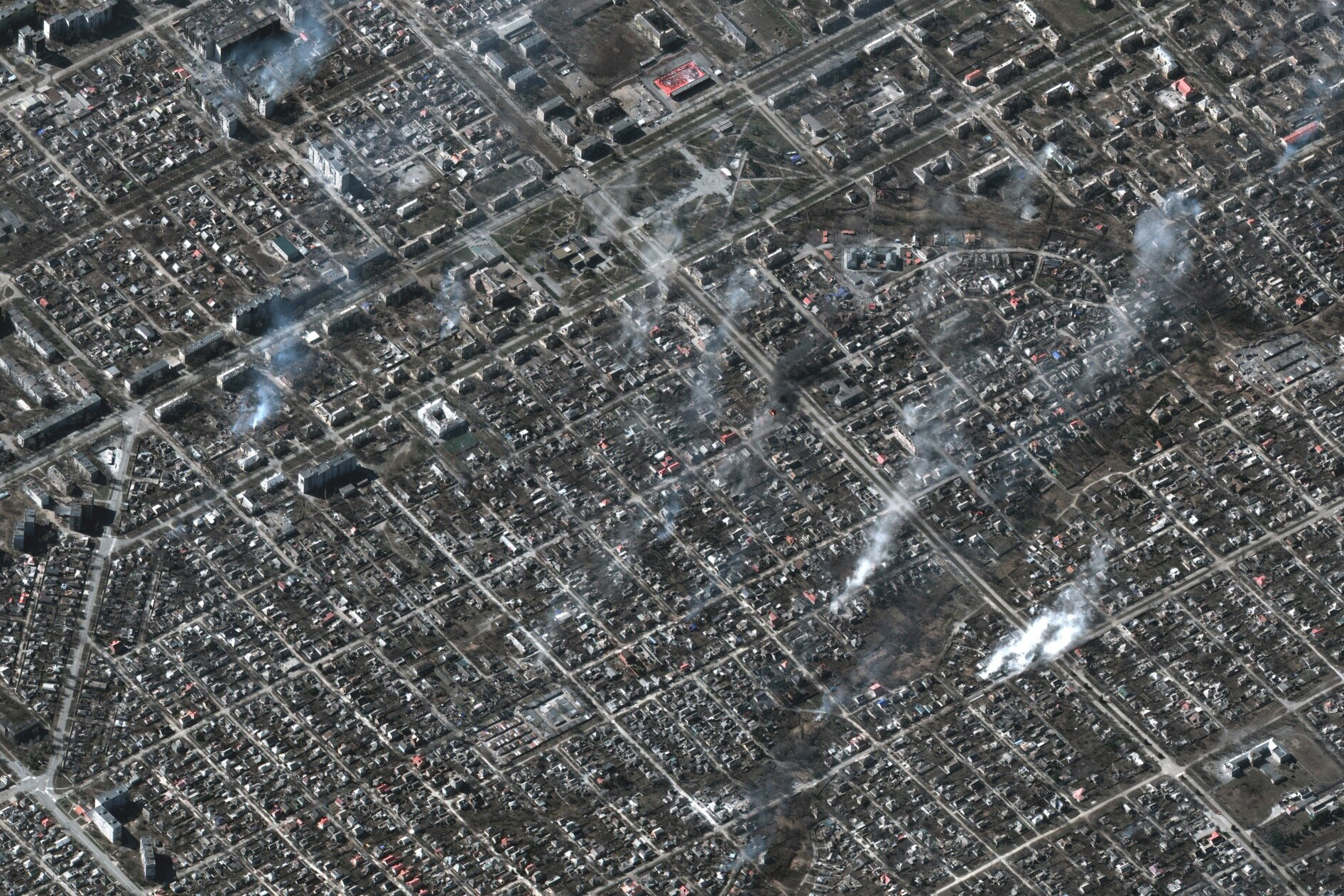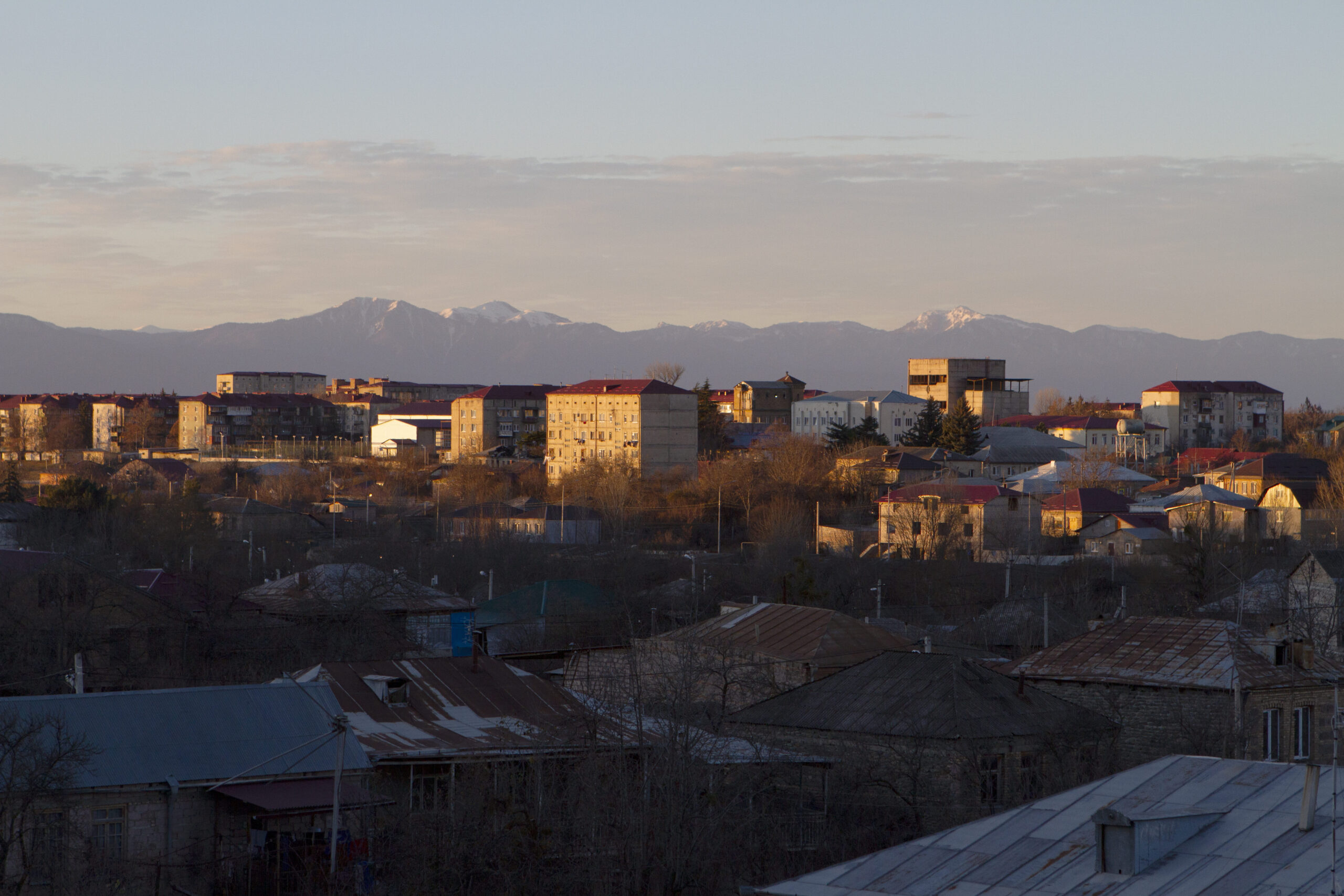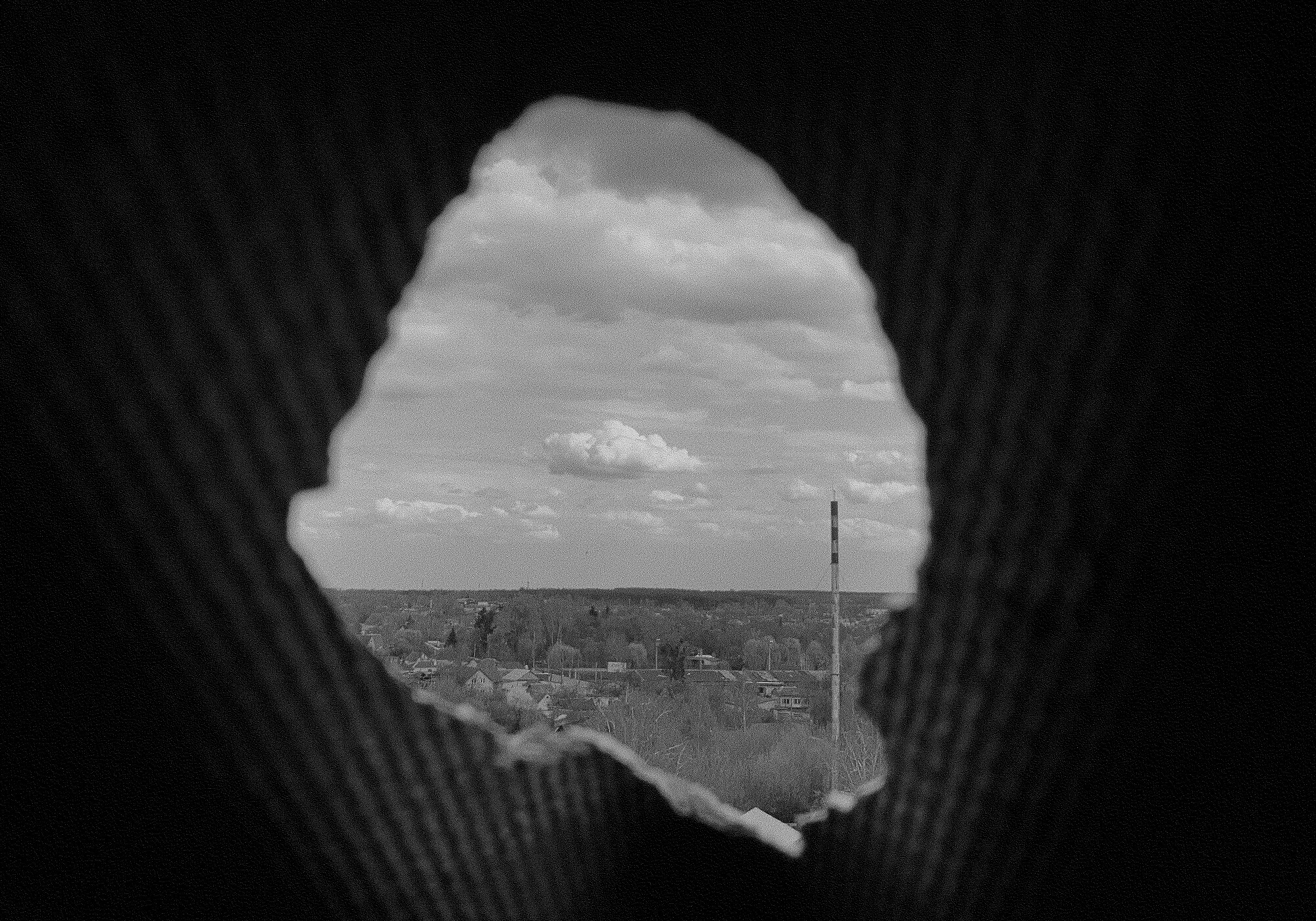5 stories about how Ukrainians are rebuilding their ruined homes
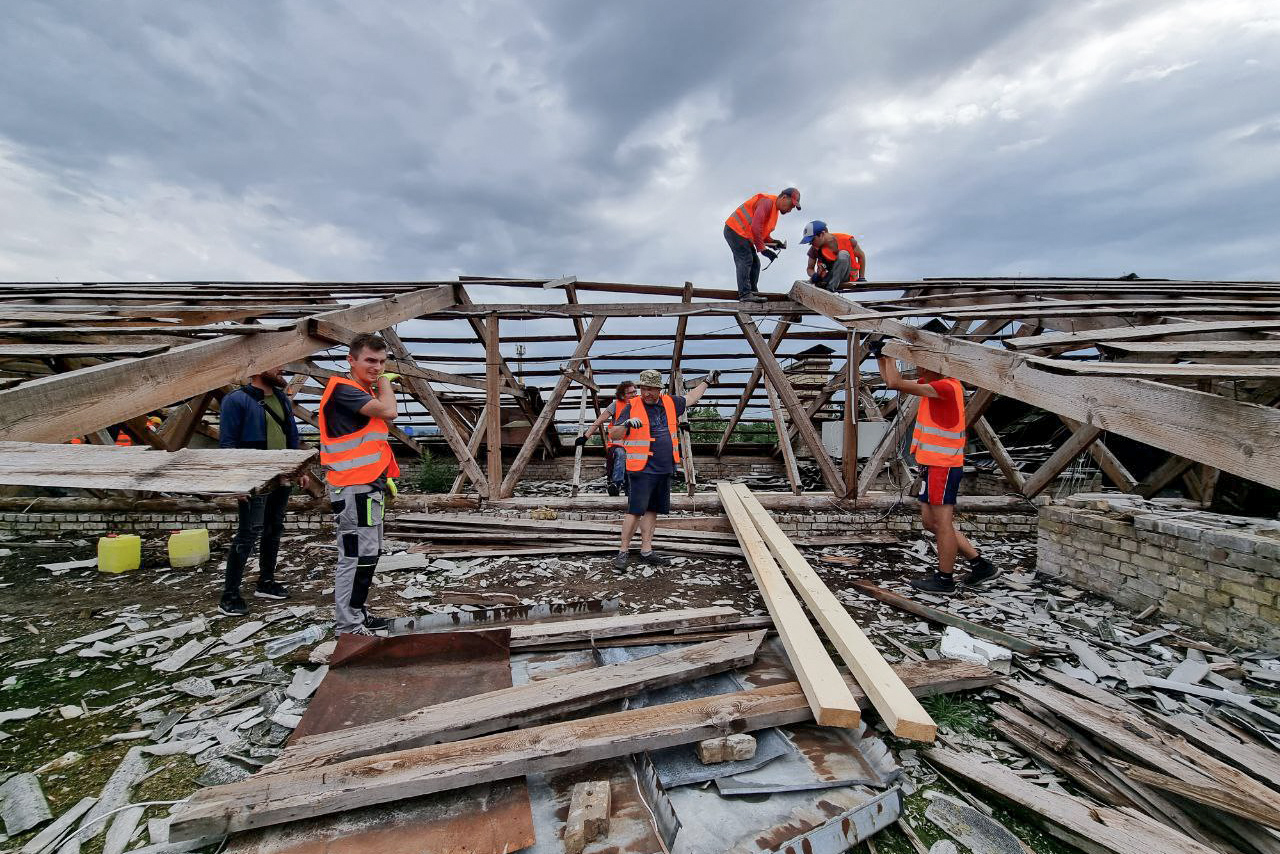
Journalist Zoya Nikityuk spoke to people from Kyiv and Chernihiv regions about how they are rebuilding their own and other people’s homes; and why it’s hard to rely on the state, developers, and even the neighbors.
“Tanya, a shell hit your house. It was impossible to call the firefighters because terrible things were happening in the city”—this was a message Tatiana Kovalenko from Irpin received from her neighbor on March 6.
Tanya’s grandfather laid the foundations of the house and her parents completed it. This year she planned to furnish two rooms upstairs for her daughters. “The elder daughter cried every night, the younger one didn’t lose hope that the room with her favorite toys was not damaged. But we believe that the heart of our house survived. We will just renew its outfit,” Tatiana says.
The Kovalenko house was one of the hundreds that were damaged. We still don’t know the exact number of homes that were razed to the ground. The latest figures were released in mid-August: 3,247 residential buildings were damaged. Out of that number 1,483 private homes were completely destroyed, 39 apartment houses were beyond repair and must be dismantled. Across Ukraine, a total of 116,000 residential buildings, which used to house 3.5 million people, have been destroyed or damaged.
Varvara Lushchyk: repairing homes and kindergartens in Chernihiv Oblast
During the first two months of the war, Varvara Lushchyk was helping prepare food for the military, elderly, and hospital patients in the kitchen of Lipa cafe in Kyiv. When it became possible to access deoccupied areas, the Lipa team delivered more than a thousand food parcels to various villages. When the volunteers came to the Chernihiv Oblast they noticed how many houses had their windows shattered and they decided to at least cover them with plastic sheeting.
After repairing windows, the team soon started repairing roofs, even though nobody had experience in construction. The volunteers invited construction professionals to join their trips to help them. The team managed to repair 10 houses, deliver construction materials for more than 80 buildings, and help dozens of people to clear the rubble. “People are almost always crying in these moments. Because they are not simply clearing the rubble, they are going through their lives, the things they collected all their lives,” Varvara says.
The volunteers decided to restore a preschool in the village of Kolychivka in Chernihiv Oblast. During the fighting, the building sheltered 250 locals. The volunteers repaired the entire 580 sq m roof, bought building materials for the interior spaces, and plan to replace most of the windows. They want to finish the work by September.
“We fundraised more than 1,750,000 hryvnias (US$47,300) to buy building materials for the people of the Chernihiv region. Almost 90 percent of donations came from regular Ukrainians. Some were transferring 7 hryvnias, some 33 hryvnias and 33 kopiyoks, and some were sending big sums of money,” Varvara says. “Many people are organizing fundraising events and dinners where they collect money for our project to help people rebuild homes in Chernihiv Oblast. We get incredible support,” she concludes choking up.
To fundraise for the Lipa team photographer Steff Gutovska cycled from Oslo to Kyiv. A waiter from Kyiv Zhenya Tselik walked 550 km from Kyiv to Zaporizhzhia and raised more than a million hryvnias (US$27,000)—he donated 250,000 to Lipa, and the rest to the Armed Forces of Ukraine. “I haven’t been called up to join the military yet, but I’m getting ready, I’m volunteering. If you don’t fight today, if you don’t volunteer, then tomorrow your friends might be dead in the ruins of some city and we won’t be free for a very long time,” says Zhenya, who turned 20 on the island of Khortytsia, at the end of his journey.
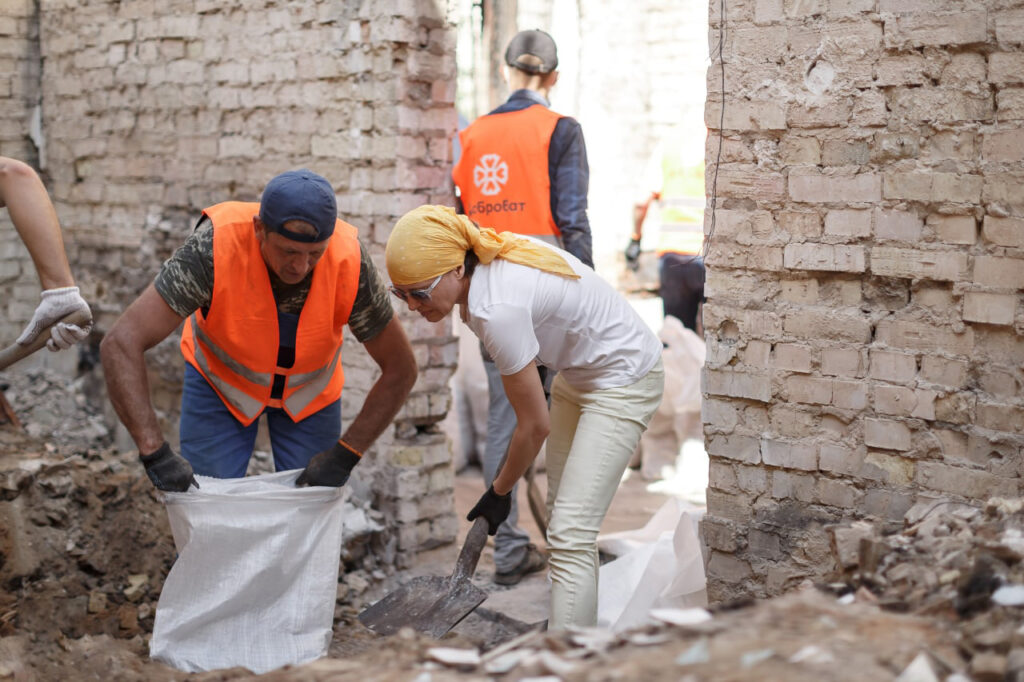
Volunteer construction battalion: rebuilding houses in Kyiv, Chernihiv, Sumy, and Kharkiv regions
In spring, after seeing how state emergency services are clearing rubble and how shorthanded they were, Viktor Andrusiv and Rostislav Smirnov decided to organize Dobrobat—a volunteer construction battalion. They posted a special form on social media and almost a thousand of people filled it out in a few days. Now the Dobrobat database has more than 30,000 people willing to help clear rubble, repair roofs, windows, doors, and strengthen the walls. Due to logistical issues and gasoline shortages, only 3,000 volunteers made it to reconstruction sites in Kyiv, Chernihiv, Sumy, and Kharkiv regions, the rest are waiting for their turn.
In five months the Dobrobat volunteers offered help at hundreds of locations. Their biggest project was the village of Yahidne in Chernihiv Oblast. This locality is notorious all over the country because of the tragic story of the Russian occupation. The invading soldiers kept about 400 locals, including children and toddlers in the basements for nearly a month. People had to sleep sitting up and were not allowed to use toilet every day. Eleven people didn’t make it until the liberation.
Almost every house in Yahidne was damaged. Dobrobat has been rebulding the vilage together with the Ministry for Communities and Territories Development of Ukraine. “The work has been going on for nearly 60 days and is still ongoing,” says Yulia Kalinovskaya, who is in charge of communications at Dobrobat. “We have already managed to rebuild some of the 21 houses that we plan to reconstruct. For example, people from Druzhba street have already moved into their homes.” The volunteers are also rebuilding social infrastructure—the team helped reconstruct schools in the villages of Maidanivka and Ozera.
Dobrobat does not try to rebuild completely destroyed houses. “The most important thing is to help as many people as possible so that they have shelter by the time the weather gets cold. That’s why it’s better to fix roofs for 20 families so that all of them can spend winter in their own homes than spend millions of hryvnias to completely rebuild one house for one family,” the team explains.
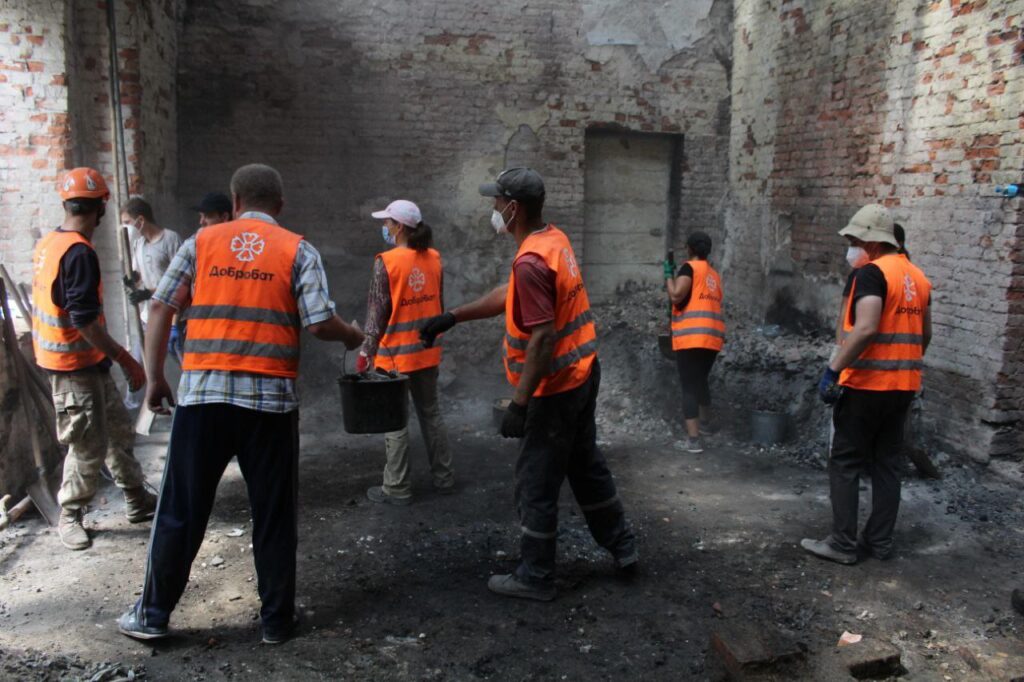
Daria Zavada: trying to convince neighbors to rebuild a nine-story apartment block in Bucha
The residents of a damaged five-story apartment building in one of the districts of Irpin are convinced that their roof and hallway windows must be repaired. When one of the homeowners decided to take the initiative and сontact the relevant authorities, other residents snubbed him.
Neighbors and even friends don’t always come to the rescue. “Guys from Ivano-Frankivsk came to clear the rubble in our apartment. They were really surprised that we don’t help each other. They said that in Western Ukraine when someone’s house gets burned down in a village, all villagers help rebuild it,” says Daria Zavada. The old nine-story apartment block where her mother and brother lived was among the first buildings hit during the Russian aggression in Bucha. Their apartment got burned down right after the family paid off their 10-year mortgage. Daria and her mother Larisa sent official letters to a local council and regional administration but received the same answers that there is a war going on and there is no money for reconstruction. International foundations are also only giving financial aid to rebuild urban infrastructure.
Daria says that she feels a lack of support from everyone: a local deputy offered only “moral support,” the head of a homeowners’ union did not open a charity account to fundraise for the reconstruction of damaged apartments, and male neighbors were not rushing to help clean up the rubble—they would rather watch other people do the work from their balconies.
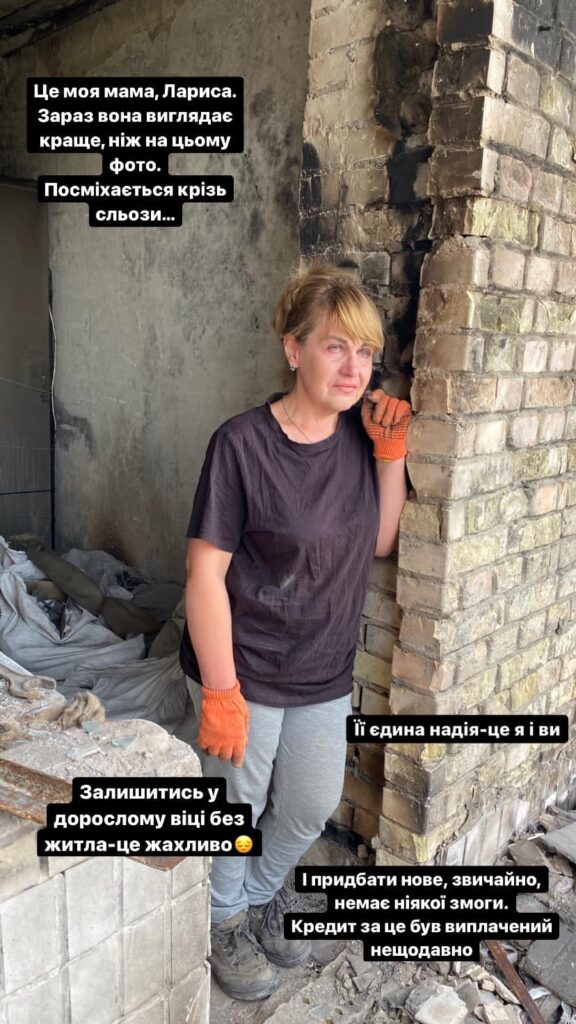
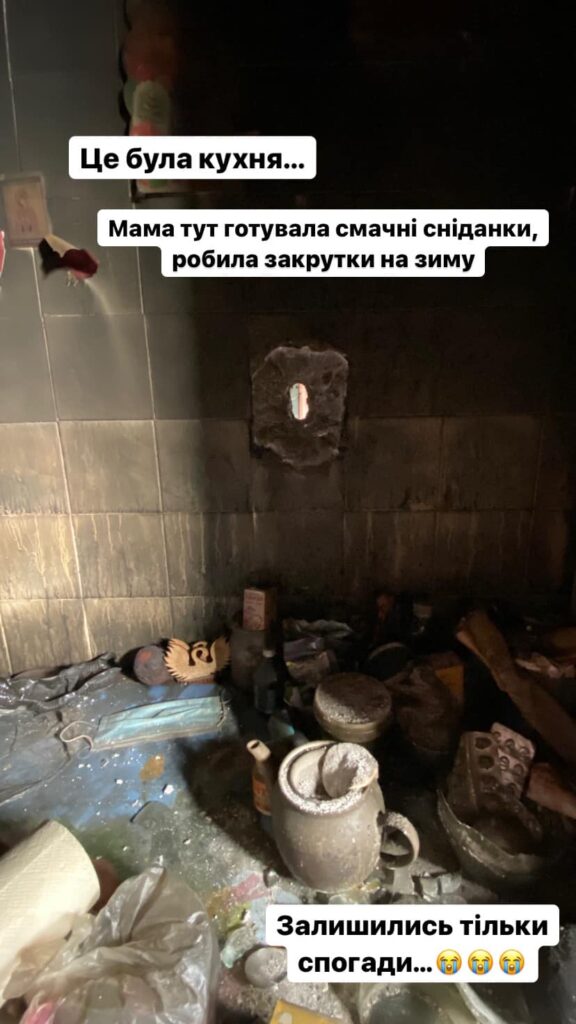
Volunteers helped clean up Daria’s mother’s apartment, but that was only the beginning. The family called up an architect who developed a project for structural reinforcement of the building. According to the project, five concrete slabs need to be replaced and 14 others need to be reinforced. The preliminary cost of the project is US$15,000. “We are not currently living in the apartment—we won’t be killed if the building collapses. But our neighbors still do not fully realize the danger so nobody is rushing to save the building from collapsing,” Daria says.
Varvara Lushchyk from Lipa explains that they are trying to help those people “who are not just lamenting their destroyed homes but are trying to do something.” The Dobrobat team says that throughout the entire time the project exists neighbours came out to help at least 10 times.
Tatiana Kovalenko: trying to get compensation for a destroyed home in Irpin
Tatiana Kovalenko from Irpin also submitted an application and says that so far she received only an answer stating that at this stage there are no compensation mechanisms developed at the state level. Andrey Litvinov, an advisor to the Mayor of Irpin, said in one of his interviews at the end of July: “As of today the legislation explaining the compensation procedure has not been passed yet. There have been more than 700 amendments made to the. Without this law, specialists can only conduct an examination and issue a conclusion.”
Furthermore, there is no money for reconstruction. For example, the regional budget funded the reparation of windows only in 141 houses of Irpin. But there are a total of more than 900 damaged houses. Authorities believe that the legislation will be passed sooner or later and the people will receive the compensation, but for now, they have to rely on themselves. The sum needed for the reconstruction of Irpin reached US$1 billion.
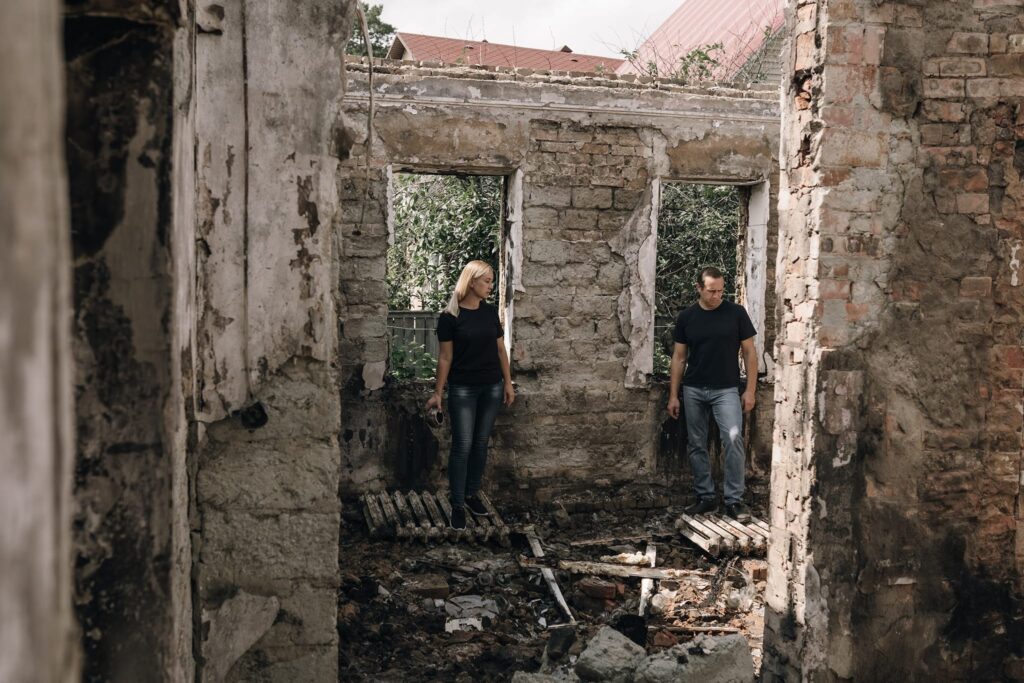
“The local budget does not even include such an item of expenditure as clearing debris,” Tatiana says. “We needed 45,000 hryvnias. It’s a substantial sum, that’s why we signed up for all sorts of groups and asked volunteers for help. But there are no available people for now.” After all friends and family started helping the Kovalenkos to clean up the remains of their former home. However, 15 people managed to clean up only a third of the house in in two days.
The displaced people are offered to stay in modular shelters. But Tatiana Kovalenko refused because she has a dog that she cannot leave alone. As for Daria Zavada, she didn’t agree or refuse because “then it would be considered that her mother and brother have a place to stay and they won’t be in a hurry to deal with their apartment. At least that’s what we were told.”
Most of the affected people usually stay with their relatives and friends. Where else could they go, they say.
The Chernyshev family: rebuilding their Irpin home on their own
Many of the victims realize that for now they can rely only on themselvess. A great example is the Chernyshev family from Irpin. Every family member’s home was damaged: elder daughter Katia’s new apartment completely burned down, and she’s left only with a melted refregirator. The younger daughter Kira’s room also was completely burned down, she lost all tehcnical equipment, and the whole apartment is covered in soot, it’s now unliveable. The roof of the parents’ house, one of the rooms, the hallway, staircase caught fire, and the windows have been shattered. In grandfather’s home, all windows and doors were knocked out by explosions, the roof was damaged, and there is a meter-wide hole in the wall.
“The family took the decision that the house where our daughter grew up needs to be rebuilt first, I built it with my own hands,” says the father, Alexander Chernyshev. “Their personal homes in big apartment buildings have too many homeowners, but here we are the owners.”
Watch the video about the apartment block where the elder Chernyshev daughter lived
Staring from spring, Alexander works day and night. Friends, colleagues, neighbors, and volunteers help him with the construction work and help find the necessary equipment. Some managers of hardware stores and builders try to help by giving discounts and offering the best deals. With joint efforts, they managed to restore the roof, change doors in the attic, and make two out of four flights of stairs.
The Chernyshevs already spent 350,000 hryvnias (US$9,440) to repair their home. The daughters left the country with their children, got jobs abroad, and are sending money for the reconstruction of the house. Some people offered financial help, donating different sums of money, from 100 hryvnias to 10,000 hryvnias.
Alexander says that every homeowner needs to give at least 150,000 hryvnias in order to repair the apartment block’s roof and sewerage. The situation is more difficult in the case of Katia’s apartment. One of the residents, who spoke anonymously, told us that she doesn’t believe in the feasibility of restoring the apartment building. “I think that the compensation from the government will at best cover the new windows. The rest needs to be fundraised independently, and the sums are staggering. And then you have to pay for the whole renovation. So basically you buy the same apartment twice… I’m really not sure about this,” the woman said.
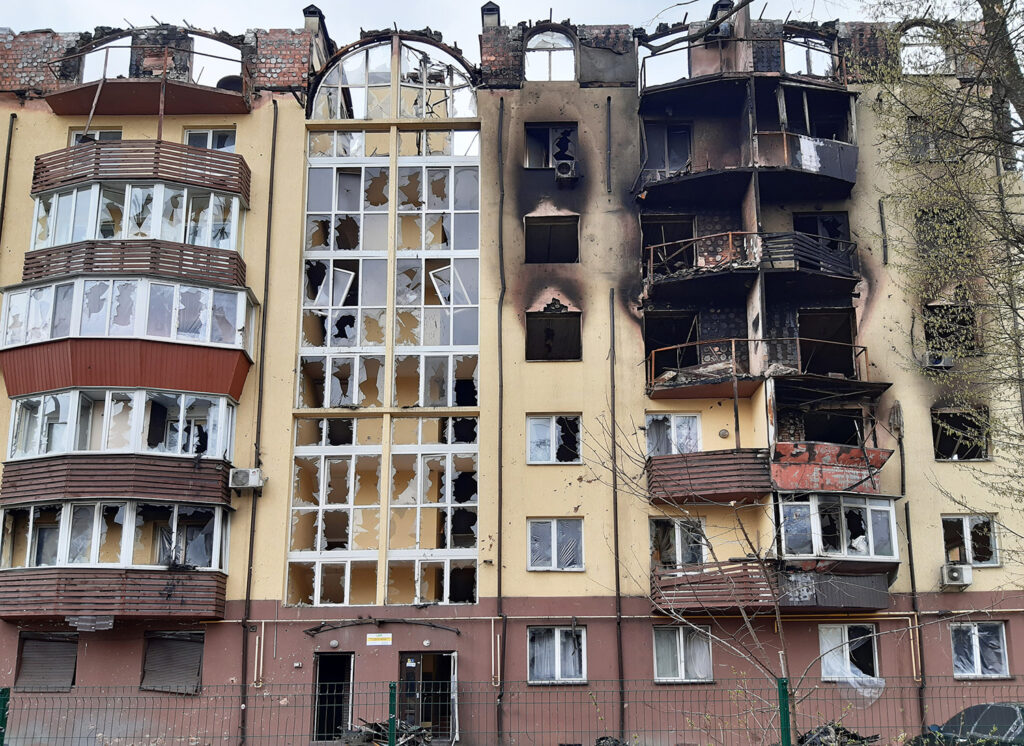
Should the developers be involved in the reconstruction? Alexander Chrnyshev has his point of view on this. “I don’t understand why there are any claims toward the developer. They sold the housing, earned money, and invested it into another asset. The only thing you can take from them is the project of the roof, so you don’t have to do it from scratch.”
Pyl tried to contact the head of the homeowners union of Katia’s apartment house to find out more about the prospects for reconstruction, the participation of local authorities, and developers. But the union did not reply. Written requests were sent to the developers of the houses where Alexander’s daughters live also were left unanswered. The representative of Strakhovskyi Group, a developer for Irpin whose houses were also damaged by the Russian aggression, promised to give a comment about the developer’s role in the reconstruction. But Pyl did not receive an answer by the time this text was published.
“You know, I just want to lie on a sofa with my grandkids crawling all over me. But for now, I need to prepare my house for the winter. Will we be able to survive this winter? I don’t know, there is still a lot of work ahead. We need to carry on and have faith because life goes on,” Alexander Chernyshev concludes with a smile.
By Zoya Nikityuk
You may also like
What do we know about the Ukraine recovery plan
How much can it cost and which countries will be participating
14 Years after the War: Russia’s Efforts to Reconstruct South Ossetia
Moskovsky Microdistrict, Putin’s street and dying chestnut forest
ARCHITECTS IN THE SHOES OF PSYCHOLOGISTS AND THE TROUBLE WITH THE NORMAN FOSTER’S PLAN
Main thoughts from the conference The Reconstruction of Ukraine. Ruination / Representation / Solida

